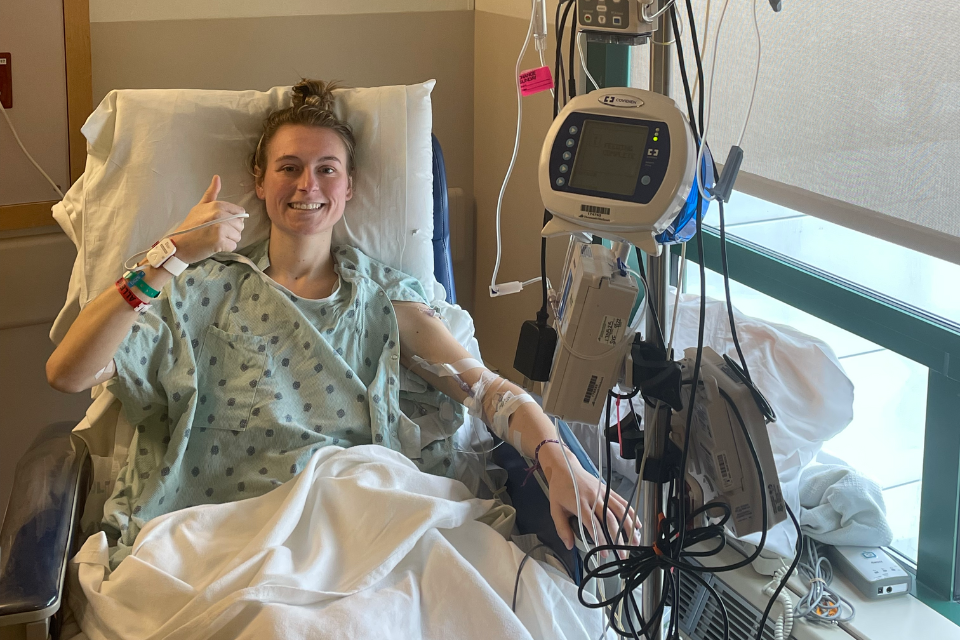The Challenge: Intense Chronic Pain from Pancreatitis
Dealing with chronic pancreatitis has been perhaps the biggest challenge in my life. I am luckier than most with the disease – I can work full-time and do most of the activities that are meaningful to me, rarely have to be hospitalized, and feel blessed to have a wonderful support system — even to the point of having a sister who has made it her personal mission to cure the disease! However, I suffer every day from pain that can be severe, and I have flare-ups that sometimes leave me completely floored and miserable for days at a time. Within the last ten years, I’ve had flare-ups that last for weeks, which leave me physically and emotionally drained.
My frustration with this disease led me to spend hundreds of hours learning as much as I could about pancreatitis and strategies that might work to cope with it. I kept coming across meditation as something that has helped people deal with chronic diseases and pain. While a Californian now, I grew up on the East Coast and initially approached meditation with a fair amount of skepticism. After a few false starts, about three years ago I decided to give it a serious try. I have been meditating almost daily since then, and it has become perhaps my most important tool to deal with the disease.
Before getting into the particulars, I want to make clear that meditation isn’t a cure for pancreatitis and it doesn’t make the pain go away. I still experience the same symptoms as before and the course of the disease probably has not changed for me. Meditation is also not a fast or easy solution; getting benefit from meditation takes time and effort. It took about a month of meditating daily to see that it was helping, and not just with pancreatitis, with my overall outlook on life.
Using Meditation for Pain Management
Meditation has helped me deal with pain in a number of significant ways; I’ll discuss two that have been particularly helpful. First, I began to understand pain differently, which has helped me to manage my pain more effectively. I learned to think of pain as inhabiting three different dimensions:
- The physical sensation – such as an intense burning on my left side.
- The emotional reaction to that sensation – feeling hopeless, scared, or worried.
- The thoughts that result – such as “this must mean I’m getting worse,” or “this disease will kill me.”
Meditation and mindfulness has taught me that, while the physical sensation may be unavoidable, the feelings and thoughts that flow from the sensation are not predetermined, and with practice I am able to control them. The next time you are in excruciating pain, try for just ten seconds to suspend your emotional reaction, which you may recognize by wincing, moaning, or overall tension in your body. You may be surprised to find that you can suppress that reaction, and that it can make the pain much more bearable. Meditation has helped me to control my reactions to pain, and to do so for longer periods of time.
Second, there are specific meditation techniques that can help change, or even reduce, the physical sensation of pain. For example, when you are in pain, try closing your eyes and concentrating on a part of your body that feels good – even if it is just feeling the breeze on your face or the sensation of a comfortable shirt on your arm. You may find that the feeling of pain diminishes noticeably.
Alternatively, you can do the opposite and focus intently on your pain, but with a sense of curiosity. Ask questions like: What exactly does my pain feel like? Where exactly is it located? What is the shape of the pain? How does it change from minute to minute? You may notice that it does change, and this realization itself can make the pain easier to bear. I have found around a dozen approaches like this that can help with pain and I now use them routinely when my pain is at its worst.
Taking the Plunge into Meditation
These days, meditation is more accessible than ever. I started with a popular meditation app, Calm, but there are many similar options that all offer a free trial and a 15 or 30-day program that teaches you the basics. I then took an 8-week course called Mindfulness Based Stress Reduction (MBSR) that involved meditating for 40 minutes a day, in-person weekly meetings that lasted for three hours, and a day-long silent retreat.
MBSR was developed in the 1970s by Jon Kabat Zinn, a professor at the University of Massachusetts Medical Center, and studies have shown it to be effective for people coping with conditions from cancer to social anxiety disorder to depression, as well as for the professionals who care for them. MBSR has a specific component on pain that I found particularly helpful. Insight Timer, which is a platform that has tens of thousands of meditations (both free and paid), has a 10-day course on using meditation for pain management that I would highly recommend, as well as a 40-day course on the basics of mindfulness and meditation. Both courses are only about 10 minutes a day and a great way to start your practice.
After three years of using meditation for pain management, I believe that it can truly help people coping with a chronic, serious, and frustrating disease like pancreatitis. Just like with exercise or sports, the more time and effort you devote to it, the better you get at it and the more it helps. This last part surprised me; I didn’t realize the extent to which your mind, like your body, can improve, expand, and even heal with 10 or 20 minutes a day of focus. It has been a fascinating and worthwhile path and I am grateful that I found it.
Meditation is not a cure for chronic diseases or chronic pain, nor is it meant to replace any medication that helps in reducing pain. While mindfulness and meditation may help in changing the way patients perceive pain, the pain is still real.

Share Your Story
Your story matters. If you’re living with pancreatitis or caring for someone who is, your experience can inspire and empower others who are going through the same thing. That’s why we want to hear from you! Share your story with us by clicking the button below.


